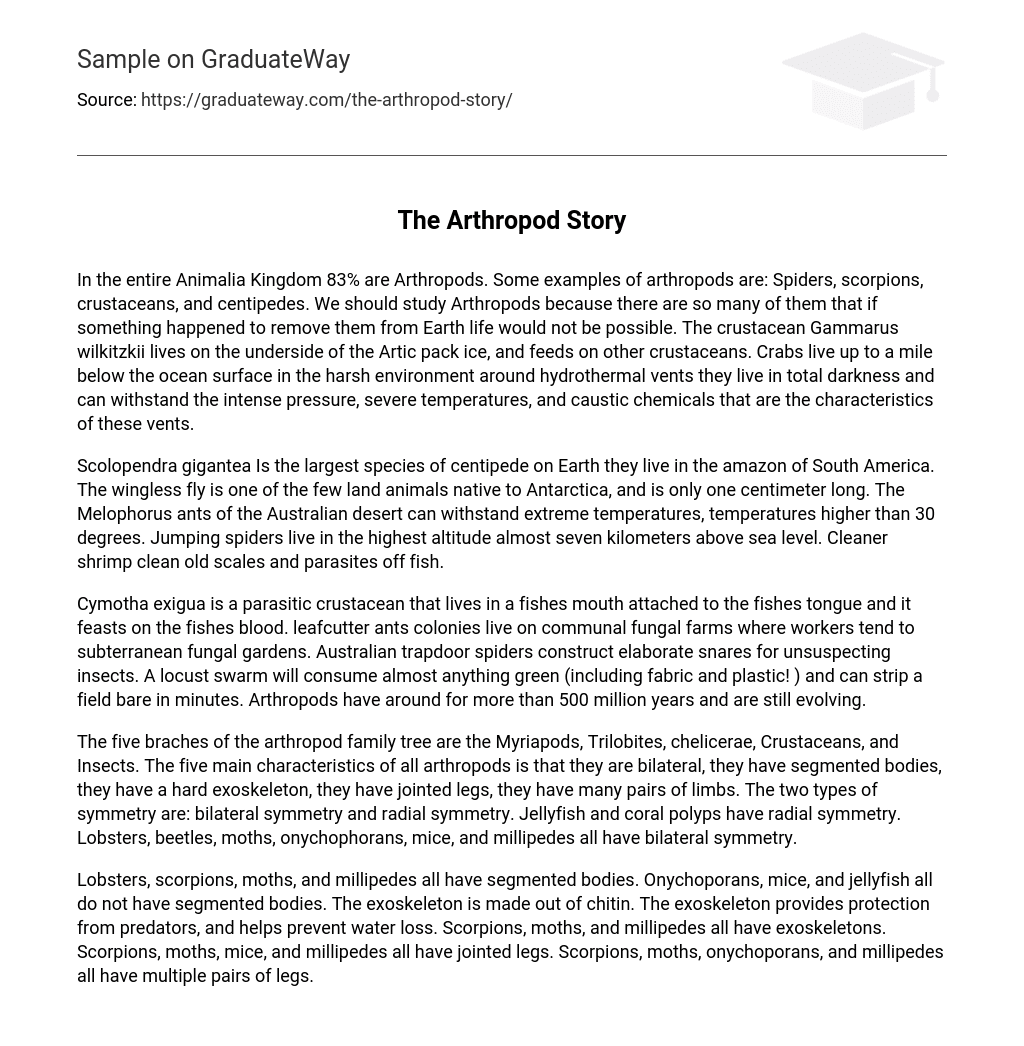In the entire Animalia Kingdom 83% are Arthropods. Some examples of arthropods are: Spiders, scorpions, crustaceans, and centipedes. We should study Arthropods because there are so many of them that if something happened to remove them from Earth life would not be possible. The crustacean Gammarus wilkitzkii lives on the underside of the Artic pack ice, and feeds on other crustaceans. Crabs live up to a mile below the ocean surface in the harsh environment around hydrothermal vents they live in total darkness and can withstand the intense pressure, severe temperatures, and caustic chemicals that are the characteristics of these vents.
Scolopendra gigantea Is the largest species of centipede on Earth they live in the amazon of South America. The wingless fly is one of the few land animals native to Antarctica, and is only one centimeter long. The Melophorus ants of the Australian desert can withstand extreme temperatures, temperatures higher than 30 degrees. Jumping spiders live in the highest altitude almost seven kilometers above sea level. Cleaner shrimp clean old scales and parasites off fish.
Cymotha exigua is a parasitic crustacean that lives in a fishes mouth attached to the fishes tongue and it feasts on the fishes blood. leafcutter ants colonies live on communal fungal farms where workers tend to subterranean fungal gardens. Australian trapdoor spiders construct elaborate snares for unsuspecting insects. A locust swarm will consume almost anything green (including fabric and plastic! ) and can strip a field bare in minutes. Arthropods have around for more than 500 million years and are still evolving.
The five braches of the arthropod family tree are the Myriapods, Trilobites, chelicerae, Crustaceans, and Insects. The five main characteristics of all arthropods is that they are bilateral, they have segmented bodies, they have a hard exoskeleton, they have jointed legs, they have many pairs of limbs. The two types of symmetry are: bilateral symmetry and radial symmetry. Jellyfish and coral polyps have radial symmetry. Lobsters, beetles, moths, onychophorans, mice, and millipedes all have bilateral symmetry.
Lobsters, scorpions, moths, and millipedes all have segmented bodies. Onychoporans, mice, and jellyfish all do not have segmented bodies. The exoskeleton is made out of chitin. The exoskeleton provides protection from predators, and helps prevent water loss. Scorpions, moths, and millipedes all have exoskeletons. Scorpions, moths, mice, and millipedes all have jointed legs. Scorpions, moths, onychoporans, and millipedes all have multiple pairs of legs.





